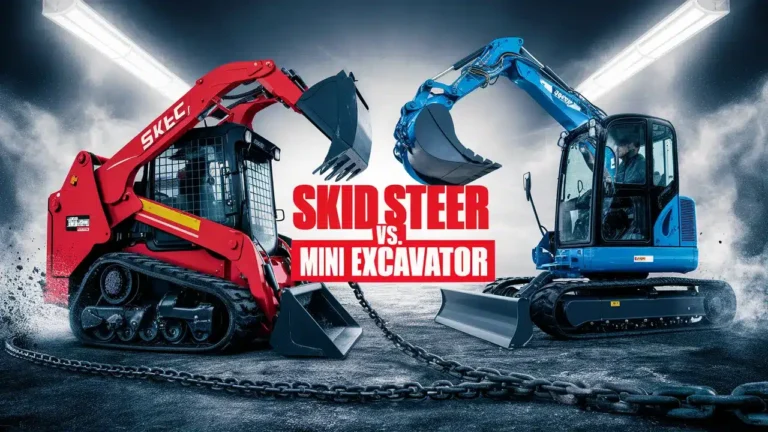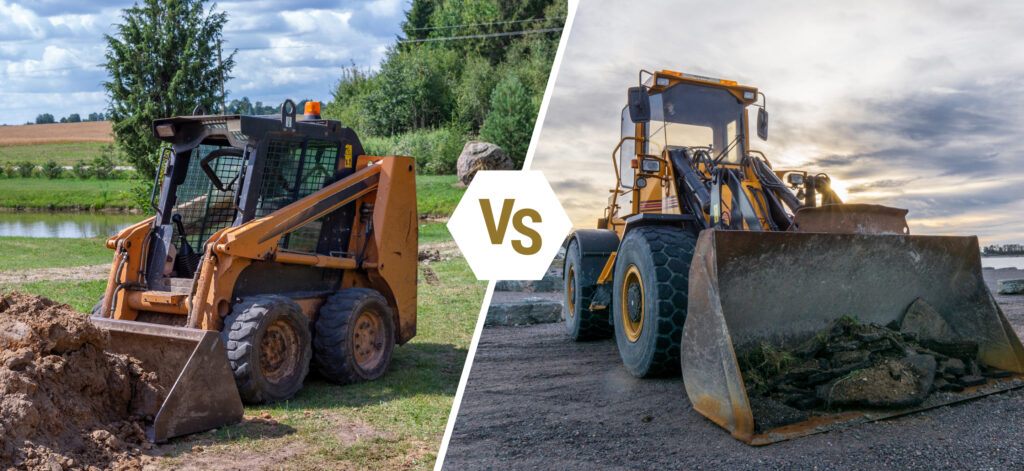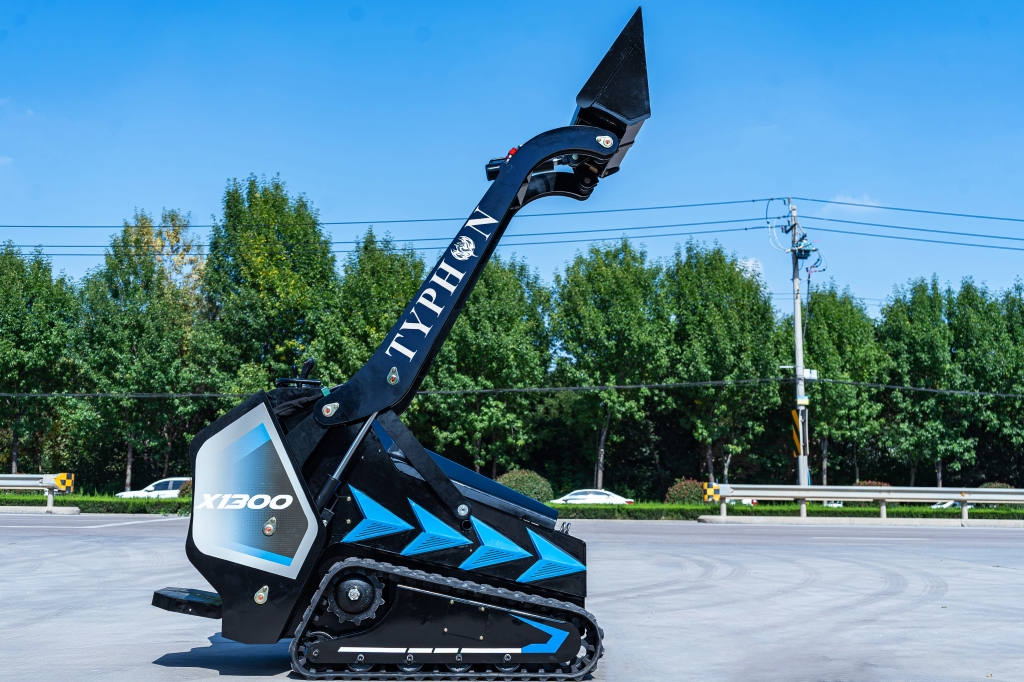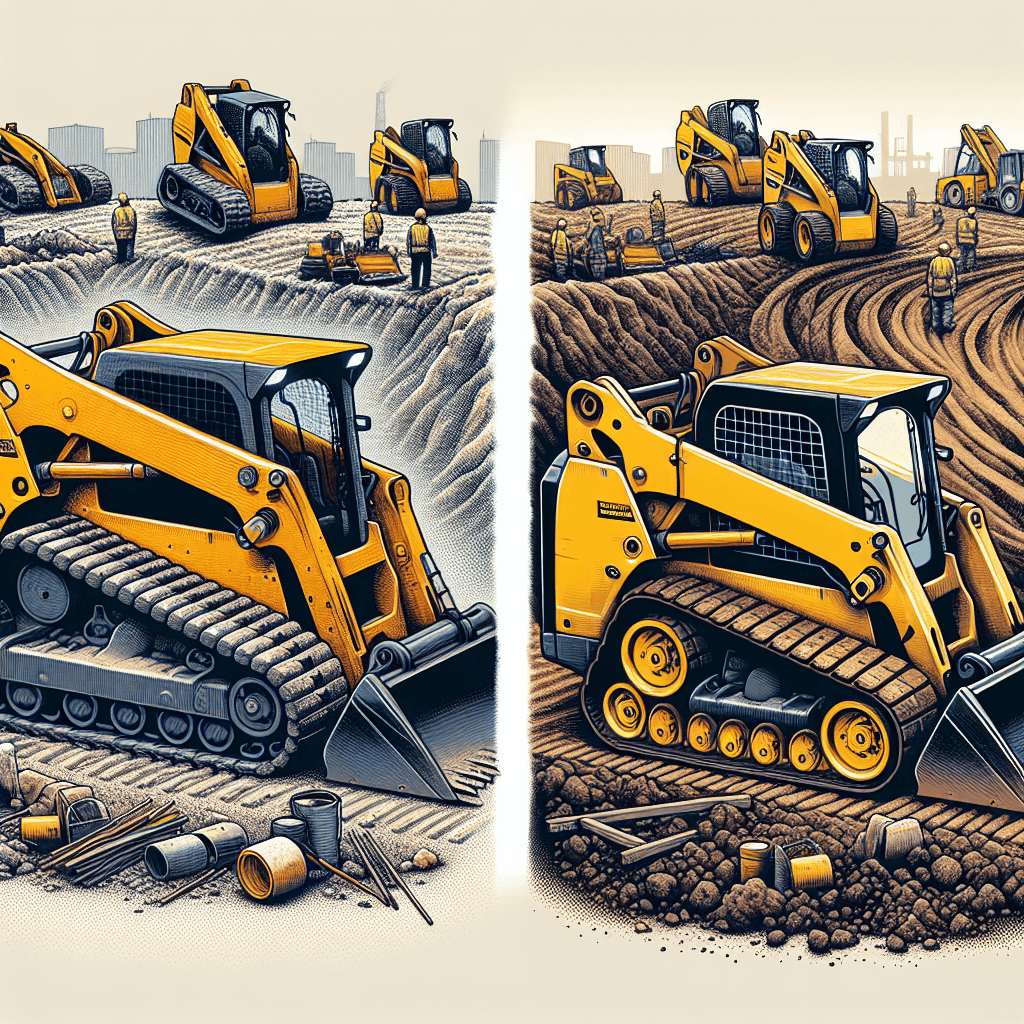As a construction and earthmoving expert, the equipment you choose can greatly affect your job efficiency. One of the most crucial decisions is choosing between skid steers and mini excavators. In this blog, we’ll explore the differences between these two machines, their optimal uses, and their unique features.
Understanding Skid Steer Loaders
What is a Skid Steer?
Skid steer loaders are compact, versatile machines designed to efficiently complete various tasks on construction sites. Equipped with four wheels and a variety of attachments, skid steers are capable of digging, grading, lifting, and hauling.
Key Features and Benefits of Skid Steers
- Exceptional Maneuverability:
- Skid steers are renowned for their ability to pivot in tight spaces, making them ideal for navigating confined areas. This maneuverability is achieved by controlling the speed of each wheel independently, allowing for precise skid and drag turns.
- Compact Size:
- The compact design of skid steers allows them to fit into spaces that larger construction equipment cannot access. This is particularly beneficial in urban or residential construction sites where space is limited.
- Diverse Attachments:
- Skid steers can be equipped with various attachments, including buckets, forks, grapples, augers, and trenchers. This versatility enables a single skid steer to perform multiple tasks, making it a valuable asset on any job site.
Optimal Uses for Skid Steers
- Landscaping and Grading:
- Skid steers are perfect for tasks requiring precision and maneuverability, such as grading, leveling, and landscaping.
- Snow Removal:
- The compact size and attachment options make skid steers highly effective for snow removal.
- Material Handling:
- Ideal for moving materials on a job site, such as loading materials onto trucks or shifting them within the site.
- Demolition:
- Skid steers excel in demolition projects, thanks to their agility and ability to navigate safely within partially demolished structures.
- Site Cleanup:
- Attaching a bucket to a skid steer allows for efficient cleanup of debris and maintenance of a tidy workspace.
Understanding Mini Excavators
What is a Mini Excavator?
Mini excavators are compact digging machines equipped with a hydraulic boom and bucket. They excel in precise digging and excavation tasks, making them ideal for home utility and landscaping projects.
Key Features and Benefits of Mini Excavators
- Precision and Accuracy:
- Mini excavators are engineered for precision, capable of performing detailed digging and excavation tasks with high accuracy. This is particularly valuable in projects where avoiding damage to existing structures or utilities is crucial.
- Hydraulic Power:
- The hydraulic arm and bucket provide the mini excavator with the strength and dexterity needed for efficient and precise excavation.
- Compact Size:
- Mini excavators are compact, typically weighing under 4,535 kg (9,999 lbs), allowing them to access confined areas and navigate narrow passageways with ease.
Optimal Uses for Mini Excavators
- Trenching:
- Ideal for creating precise trenches for utilities, plumbing, or electrical work.
- Foundation Excavation:
- Perfect for digging foundations in residential or small-scale construction projects.
- Utility Installation:
- Essential for installing utilities in urban areas, where maneuverability in tight spaces is crucial.
- Landscaping in Confined Spaces:
- Suitable for tasks like digging ponds, creating garden beds, or shaping terrain with minimal disruption.
- Specialty Projects:
- Mini excavators excel in tasks such as stump removal, pool excavation, and precise grading.
Learn More: Top 10 Mini Skid Loaders: Complete Guide To Mini Skid Steer Loaders
Skid Steer vs. Mini Excavator: Key Differences
Digging Capabilities
- Skid Steers:
- While capable of light digging with appropriate attachments, skid steers lack the precision and depth of mini excavators.
- Mini Excavators:
- Equipped with hydraulic arms, mini excavators offer superior precision and can dig to depths of 6′ to 17′, making them ideal for tasks requiring delicate excavation.
Mobility and Maneuverability
- Skid Steers:
- Excel in tight spaces with agile zero-radius turns, making them highly maneuverable.
- Mini Excavators:
- Use tracked movement for stability and precision, suitable for navigating confined areas with care.
Versatility on Site
- Skid Steers:
- Known for their adaptability, skid steers can tackle various tasks with attachments like buckets, grading blades, pallet forks, augers, trenchers, and snow removal tools.
- Mini Excavators:
- Versatile with hydraulic arm attachments, mini excavators are ideal for trenching, foundation excavation, landscaping, utility installation, stump removal, and pool excavation.
Choosing the Right Machine: Factors to Consider
Primary Task: Lifting, Moving, or Digging?
- Digging and Excavation:
- Mini excavators are the natural choice for tasks requiring precision digging.
- Material Handling and General Utility:
- Skid steers offer versatility for lifting, moving, and various utility tasks with different attachments.
Space Considerations
- Tight and Confined Spaces:
- Both skid steers and mini excavators are suitable for navigating confined areas, but mini excavators may offer better precision in tight spaces.
- Open Spaces:
- Both machines perform well in open spaces; the choice depends on the specific needs of the job.
Budget Constraints
- Rental Costs:
- Generally, skid steers are more cost-effective to rent than mini excavators. However, rental prices can vary based on location, demand, and rental duration. Comparing rental costs in your area is essential.
Learn More: How To Safeguard Your Skid-Steer Operators and Loaders
By understanding the unique features, benefits, and optimal uses of skid steers and mini excavators, you can make an informed decision to enhance your job efficiency and productivity on the construction site.

